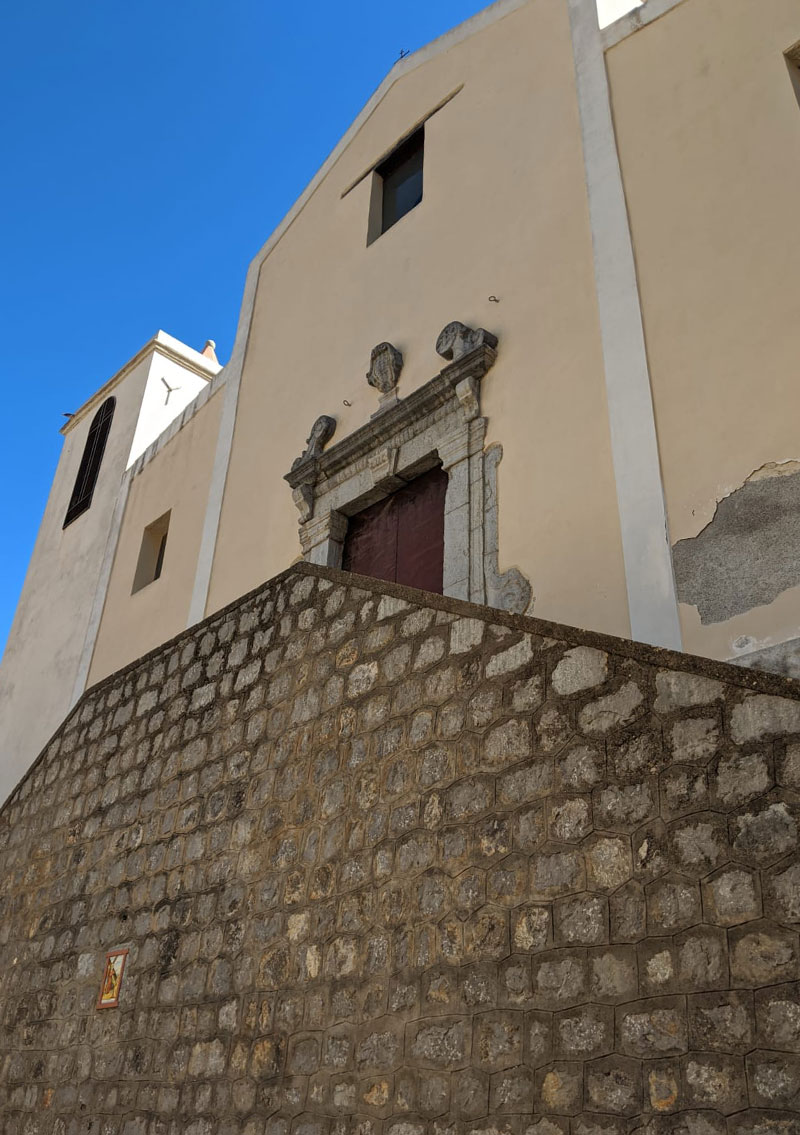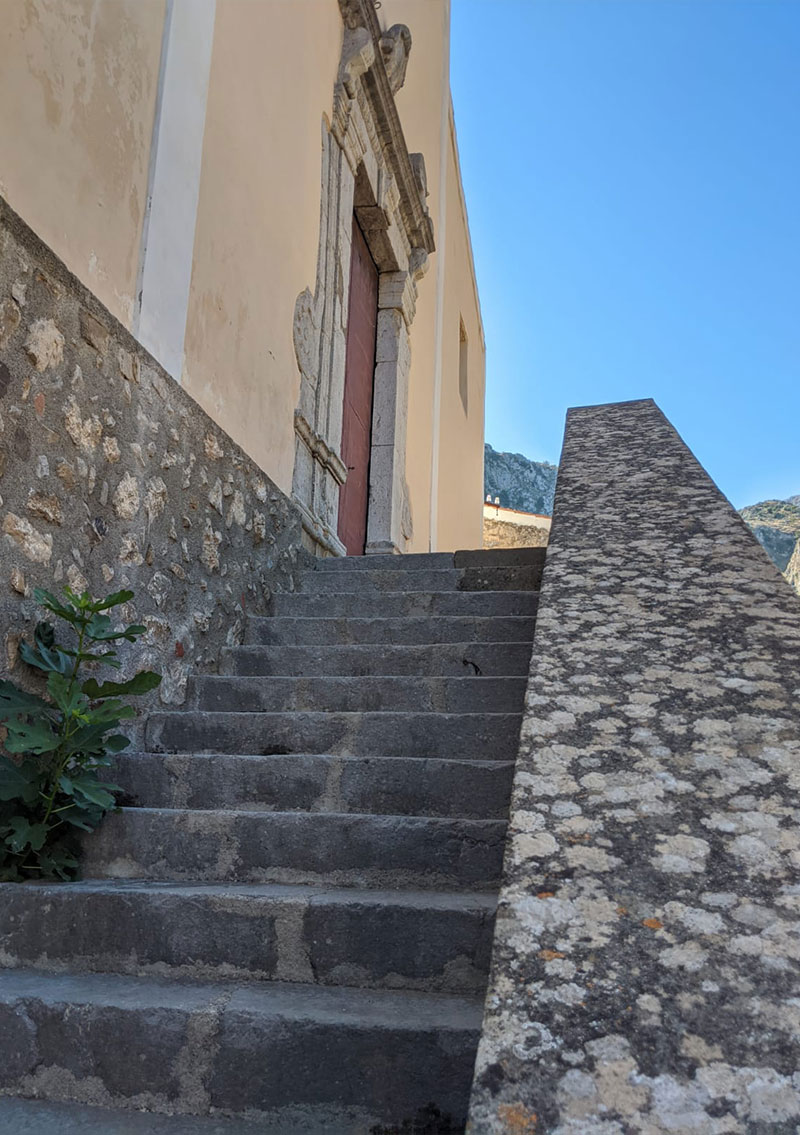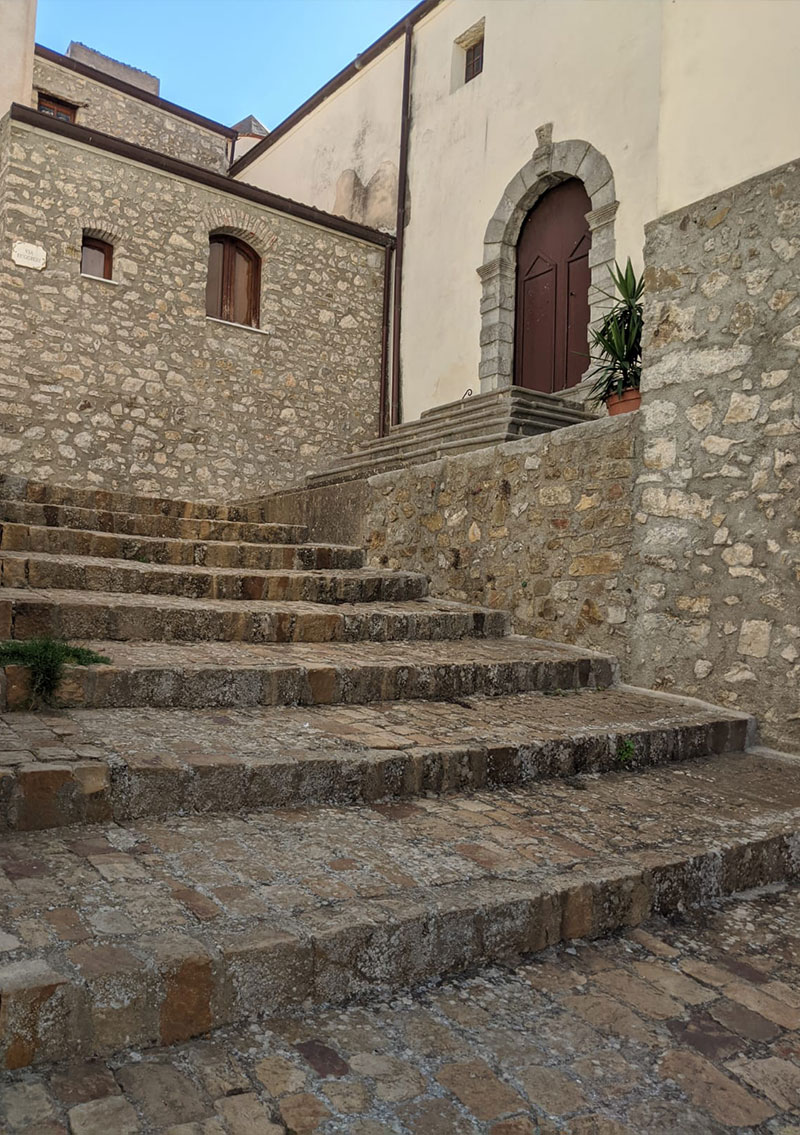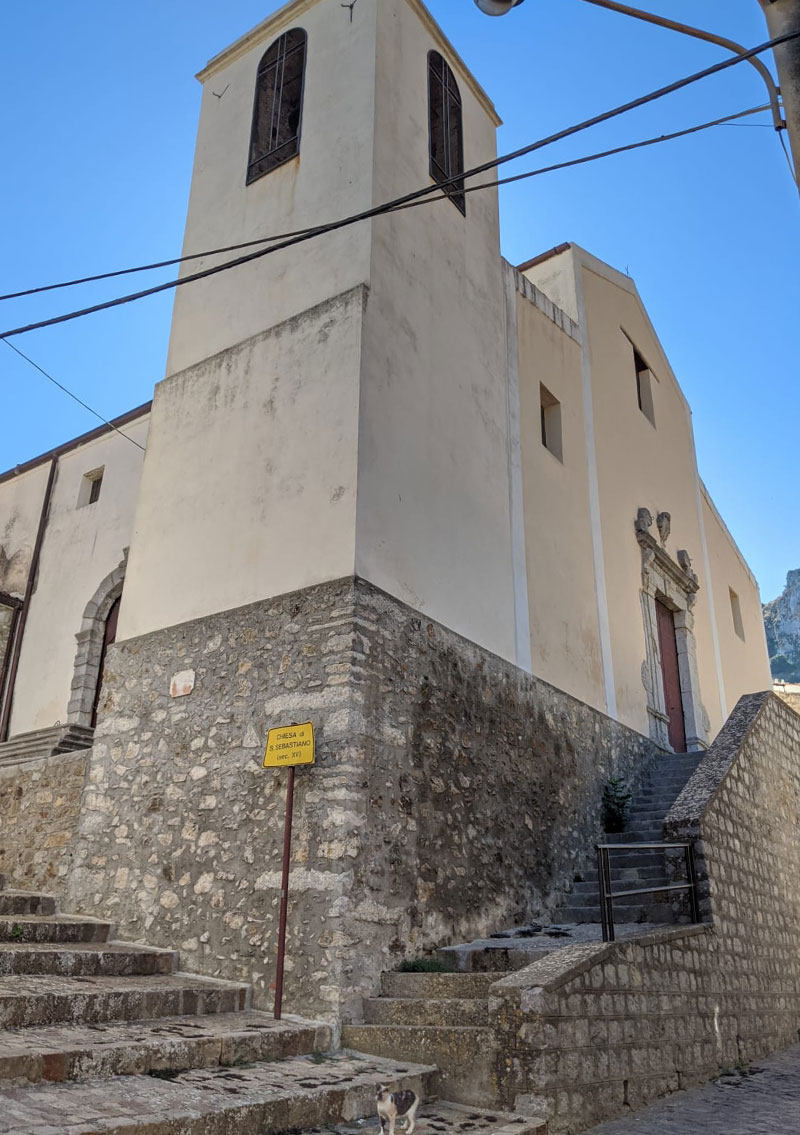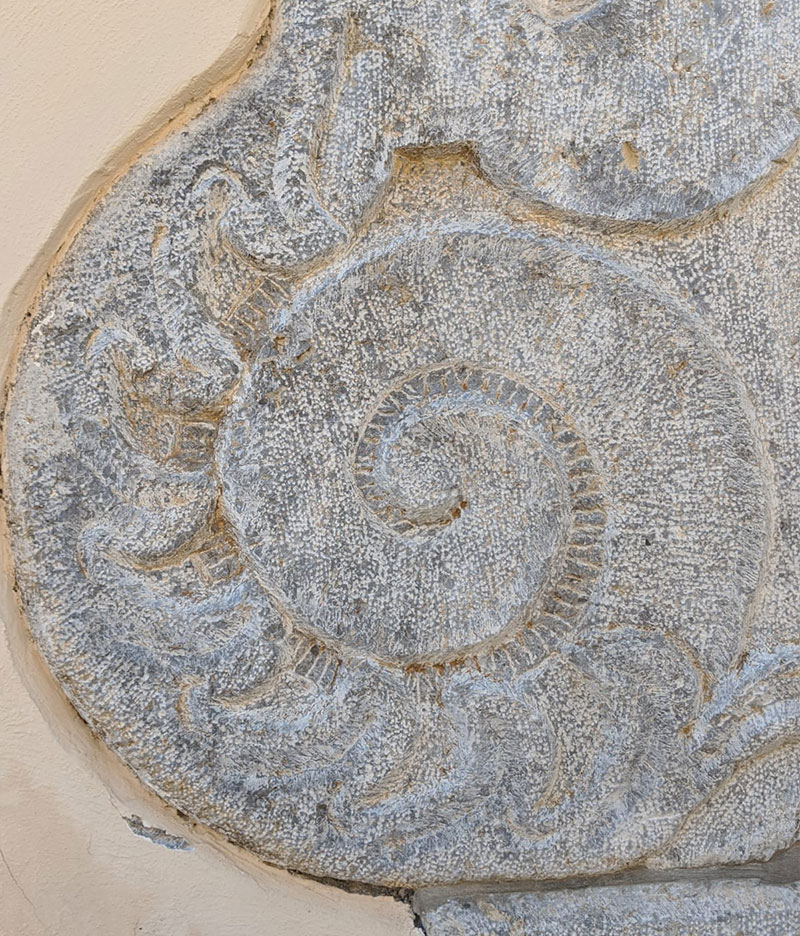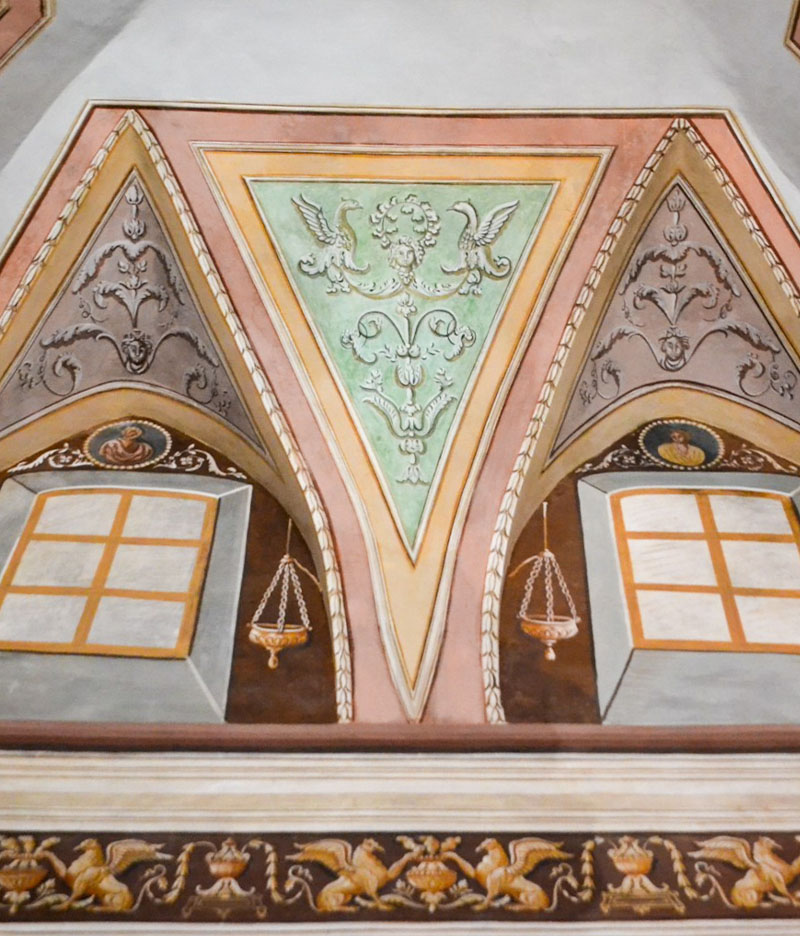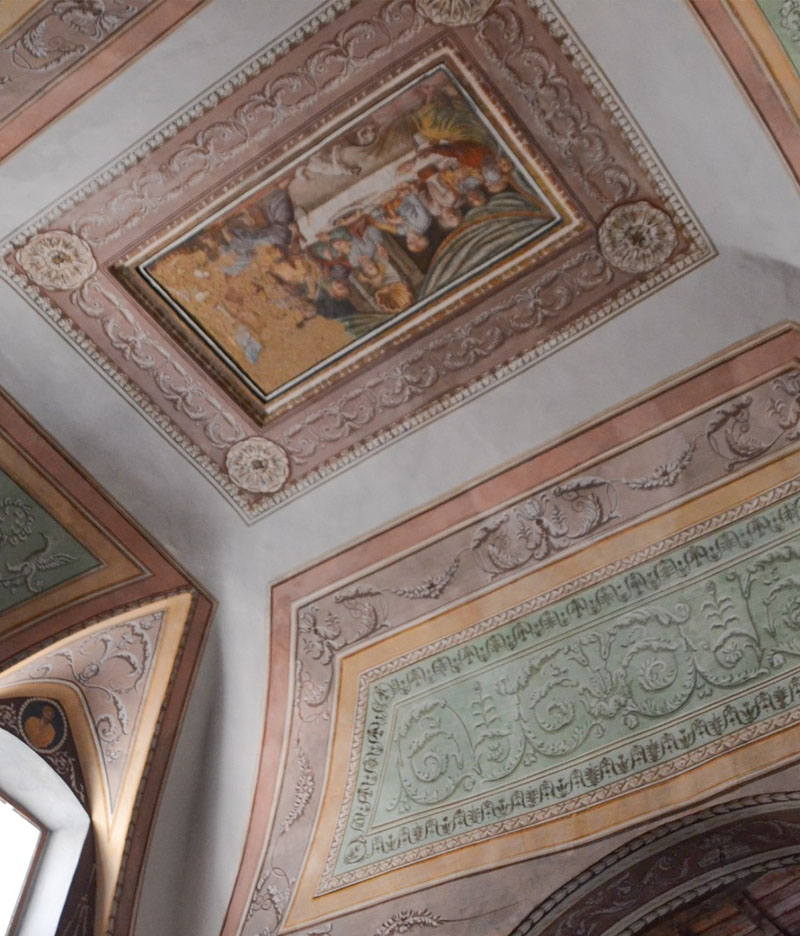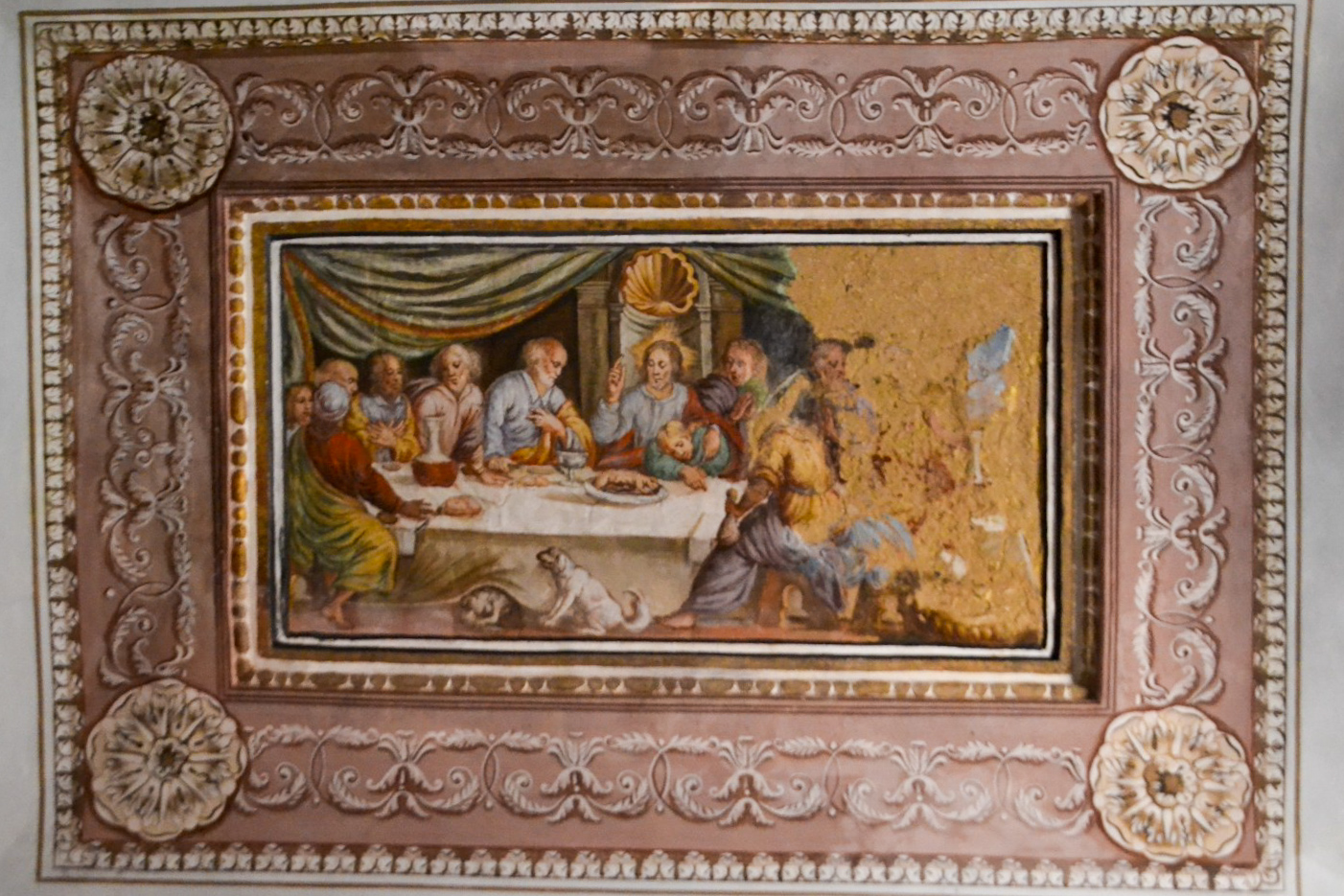The authors of these paintings are unknown, even though some art critics have attributed them to Zoppo di Ganci, a pseudonym under which, in Counter-Reformation Sicily, two well-known Mannerist painters worked: Giuseppe Salerno (1570-1633) and Gaspare Vazzano (1562-1630).
To the latter was also attributed the fresco of the Last Supper illustrated in the ceiling of the Chapel of the Holy Sacrament, that presents the scene of blessing Christ facing a plate in the center of the mansa with a lamb and a goblet, allegories of the passion of Jesus.
At the bottom of the scene lies a hungry dog, behind a stone shell used as a decorative element that also symbolizes rebirth. Inside the church there is an ancient piece of precious wood furniture, placed in the sacristy, and a precious organ, erected for devotion by Giovanni Culotta in 1722 and recently restored.
The instrument, made of over 300 pipes and dated back to 1906, was made by Michele Polizzi, owner of a remarkable organ workshop in Modica. The external facade has also been recently rebuilt and shows three access doors linked to a peculiar custom called the “obitu maggiuri“.
Up to some time ago, the church was in fact exclusively used to house the corpses of the deceased for the celebration of funeral rites. To each social class there was reserved a different treatment, “Obitu” (a legacy of Masses for the deceased).
There were three types: the Major reserved for gentlemen and clergymen that provided the funeral accompaniment with great pomp from the main door, passing through the square to the cemetery; Half an obit of 40 tarì without accompaniment reserved for the less noble with exit from the side entrance of Via Ruggieri; Obit reserved for the less wealthy classes who were entitled only to a few tolls of bell and the exit of the body from the entrance of Salita Parrocchia in solitude, towards the cemetery.



